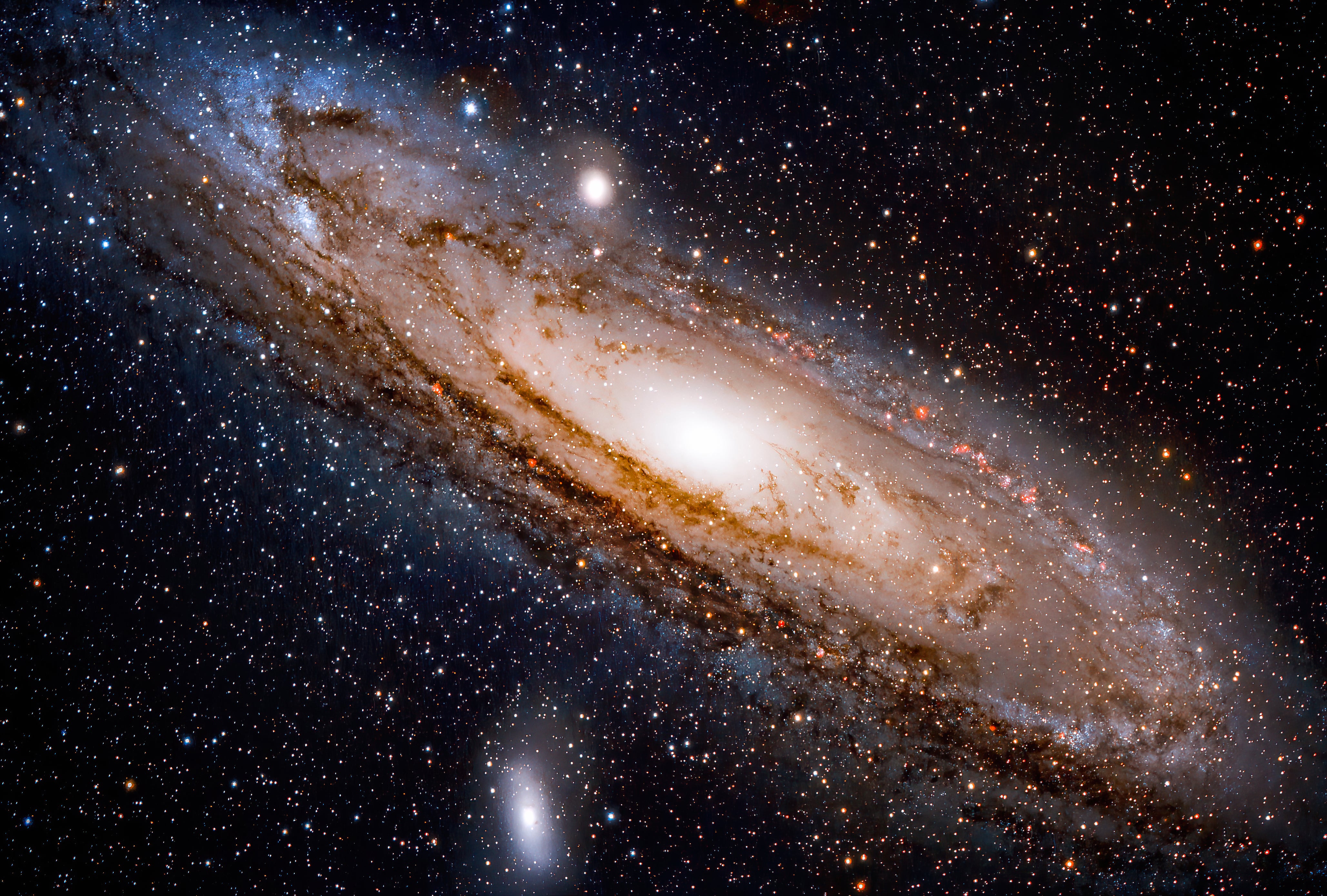Stargazing in November: An adventure in myth
There are plenty of intriguing celestial sights to take in this month, Nigel Henbest writes

This month, we’re treated to the four brightest planets adorning our evening sky, and I’m highlighting them in the "What’s Up" section below. But let’s not ignore the stars on view these autumn evenings. Maybe they don’t dazzle as much, but they tell a fascinating tale – and hold a feast of intriguing celestial sights.
Let’s start by looking southwards. Above the planet Saturn – the brightest light in a sea of faint stars – you’ll find a large quadrilateral of stars, know to astronomers as the Square of Pegasus. To the ancient Greeks, this was the body of a horse that’s flying through the sky upside down, for some unaccountable reason, with his neck stretched out to the right and his nose marked by the star Enif.
In Greek imagination, the line of three stars to the upper left of Pegasus depicted the beautiful princess Andromeda chained to a rock. And a chunky star-shape below her represented Cetus, a sea-monster that was about to gobble her up for dinner.
OK, time for a quick flashback. Queen Cassiopeia (appearing almost overhead as a W-shape of stars) boasted that her daughter Andromeda was more beautiful than the sea-nymphs. Poseidon, god of the sea, was so incensed that he dispatched Cetus to ravage the country’s coastline. Andromeda’s father, King Cepheus (a house-shaped constellation near Cassiopeia) consulted the oracle. He learnt the only solution was to sacrifice his daughter to the monster – and that’s why she’s bound up by the sea.
But as Cetus moves in the devour the poor girl, look up! The mighty superhero Perseus is flying by. Pause for another flashback… Perseus had been on a mission to slay the dreadful Medusa, a woman with live snakes for hair and a face that meant anyone looking at her would turn to stone. Artfully using a mirror to avoid a direct view, Perseus decapitated Medusa. Her blood dripping into the sea gave birth to Pegasus. Perseus was flying home with Medusa’s head in a bag.
Perseus also employed his decapitation skills on Cetus, rescued Andromeda, and asked Cassiopeia and Cepheus for her hand in marriage. They grudgingly agreed, though they had other plans. At the wedding feast, another suitor strode in with 200 armed guards to confront Perseus. At this point, the hero whipped out Medusa’s head and turned them all to stone. And, of course, Perseus and Andromeda lived happily ever after.
In myth, their descendants became a mighty civilisation in the Middle East: taking their name from their famous ancestor Perseus, they became the Persians. And there’s another interesting name-twist in this saga. The first part of Andromeda’s name comes from "andros," meaning "man," the second part is from the "medo," to rule over or protect – the same word that gave Medusa her name.
The highlight of the constellation Andromeda is a faint glowing smudge above the central star. The Andromeda Galaxy is the nearest large star-city to our own Milky Way, and it only appears dim because it lies over two million light years away. On a dark night – and especially with binoculars – you can see it’s several times the size of the Full Moon, but you need to take a long-exposure image to capture its characteristic spiral shape.
Two fainter fuzzy patches between Perseus and Cassiopeia are twin star-clusters within the Milky Way Galaxy. The Double Cluster lies 7,500 light years away, and was born only 12 million years ago – real infants on the cosmic time scale.
Over in Cepheus, watch the star Delta Cephei over a period of days, and you’ll see it regularly brightens and fades. Astronomers have found that the average luminosity of stars like this – Cepheid variables – is related to their period of variation. As a result, they can use this kind of star as a yardstick to measure the distances to remote galaxies.
Finally, the star Algol, in Perseus, also varies in brightness. But that’s for a different reason: a fainter star periodically orbits in front of Algol itself, partially eclipsing it. Algol’s variability has only been noted within the past 400 years, but the star’s name comes from the ancient Arabic for "ghost star." Given that its position marks Medusa’s head in Perseus’ hand, maybe the ancient Greeks knew of Algol’s strange behaviour long before, and it led to them depicting the epic tale of Perseus and Andromeda as constellations covering much of the autumn sky.
What’s Up
The first planet to appear after sunset is the beautiful Evening Star, Venus, hanging like a tiny lantern in the twilight glow to the west. More brilliant than anything in the night sky bar the Moon, Venus is gradually brightening as it swings towards the Earth, and it will grace our evening skies until March.

Considerably dimmer, but still outshining the stars in the western sky, is the planet Saturn. Grab a telescope to view its famous rings and Saturn’s largest moon, Titan, a world swathed in orange clouds floating in a dense atmosphere.
Over in the east, Jupiter is second in brightness to Venus. It lies between the ‘horns’ of Taurus (the bull), with the orange star Aldebaran to its right marking the eye of the angry bovine. The Moon passes above Jupiter on 17 November.
And to the lower left of Jupiter you can Mars, betrayed by its distinctive ochre colour. The Red Planet is situated to the left of the twin stars of Gemini, Castor and Pollux, and the Moon lies near to Mars on 20 November.
We’re due for a meteor shower on the night of 17/18 November, but sadly our view will be spoilt by the brilliant Moon in the sky.
15 November, 9.28pm: Full Moon; supermoon
16 November: Mercury at greatest elongation east
17 November: Moon near Jupiter; maximum of Leonid meteor shower
19 November: Moon near Castor and Pollux
20 November: Moon near Mars
23 November, 1.28am: Last Quarter Moon
Nigel Henbest’s ‘Stargazing 2025’ (Philip’s £6.99) is your monthly guide to everything happening in the night sky next year






Join our commenting forum
Join thought-provoking conversations, follow other Independent readers and see their replies
Comments